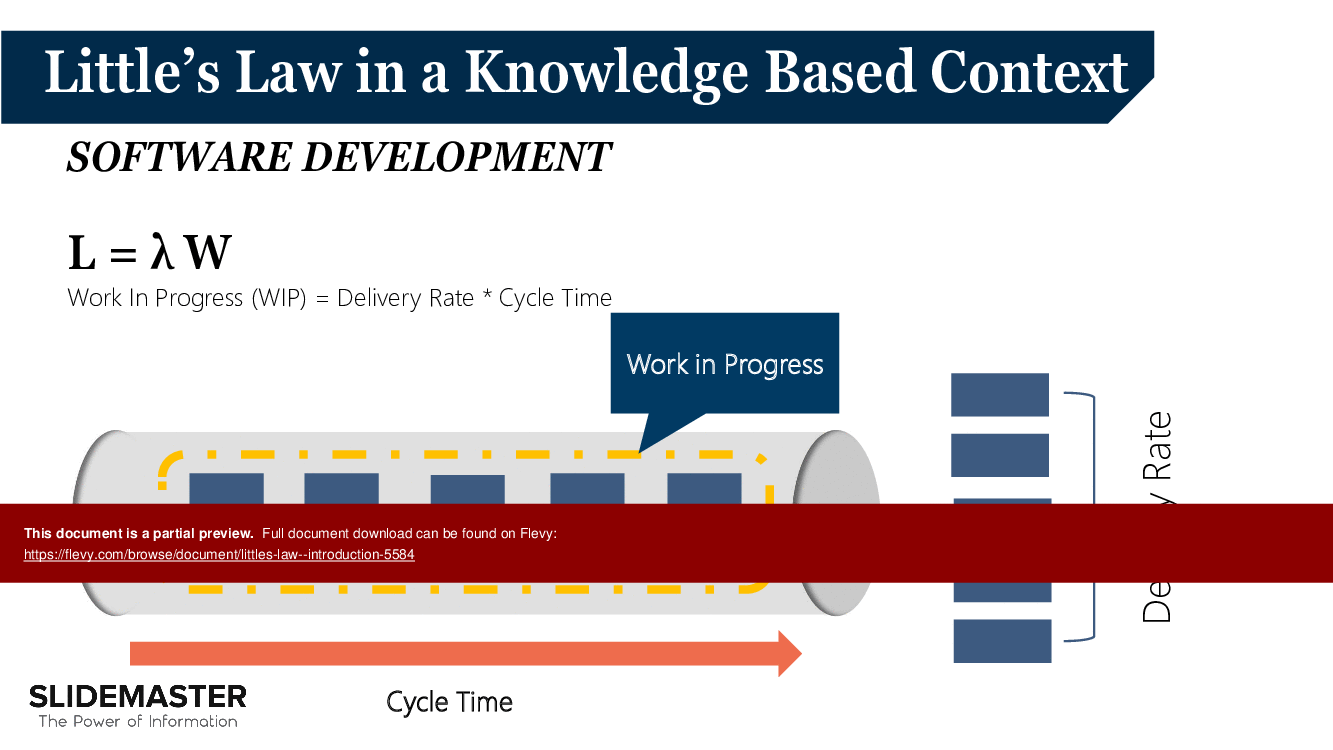Little's Law - Introduction (PowerPoint PPTX Slide Deck)
PowerPoint (PPTX) 37 Slides
BENEFITS OF THIS POWERPOINT DOCUMENT
- Introduction to Little's Law
- Understand how Little's Law can be used in the optimization of processes
- Understand the role of Little's Law in processes in a knowledge-based context.
PPT DESCRIPTION
Little's Law, is a significant regularity in queueing theory. It was proved by John D. C. Little in 1961.
Little's Law states that the average number of customers in a queuing system that is in a steady state is equal to the product of their average arrival rate and their average time spent in the system.
Although this seems intuitively reasonable, it is a result worth noting: it implies that this behavior is completely independent of the probability distributions used, and thus no assumptions need be made about the distribution of arrival times or dispatch discipline.
Little's Law is important in the context of process optimization, among other things. Especially in the context of process control based on Kanban, it is applied as an important approach with regard to the optimization of processes and throughput.
Contents
• Short Historical Intro of Little's Law
• Little's Law & Its Elements
• Necessary Assumptions for Little's Law to work
• Little's Law in a Knowledge Based Context (Kanban / Kanban IT)
Application
This presentation can of course be used as it is offered. It also contains a suggestion for an additional text for the presenter. However, it is recommended to adapt the presentation for one's own needs so that it can be used optimally tailored to the purpose intended by the presenter.
Got a question about the product? Email us at support@flevy.com or ask the author directly by using the "Ask the Author a Question" form. If you cannot view the preview above this document description, go here to view the large preview instead.
Source: Little's Law - Introduction PowerPoint (PPTX) Presentation Slide Deck, Slidemaster









